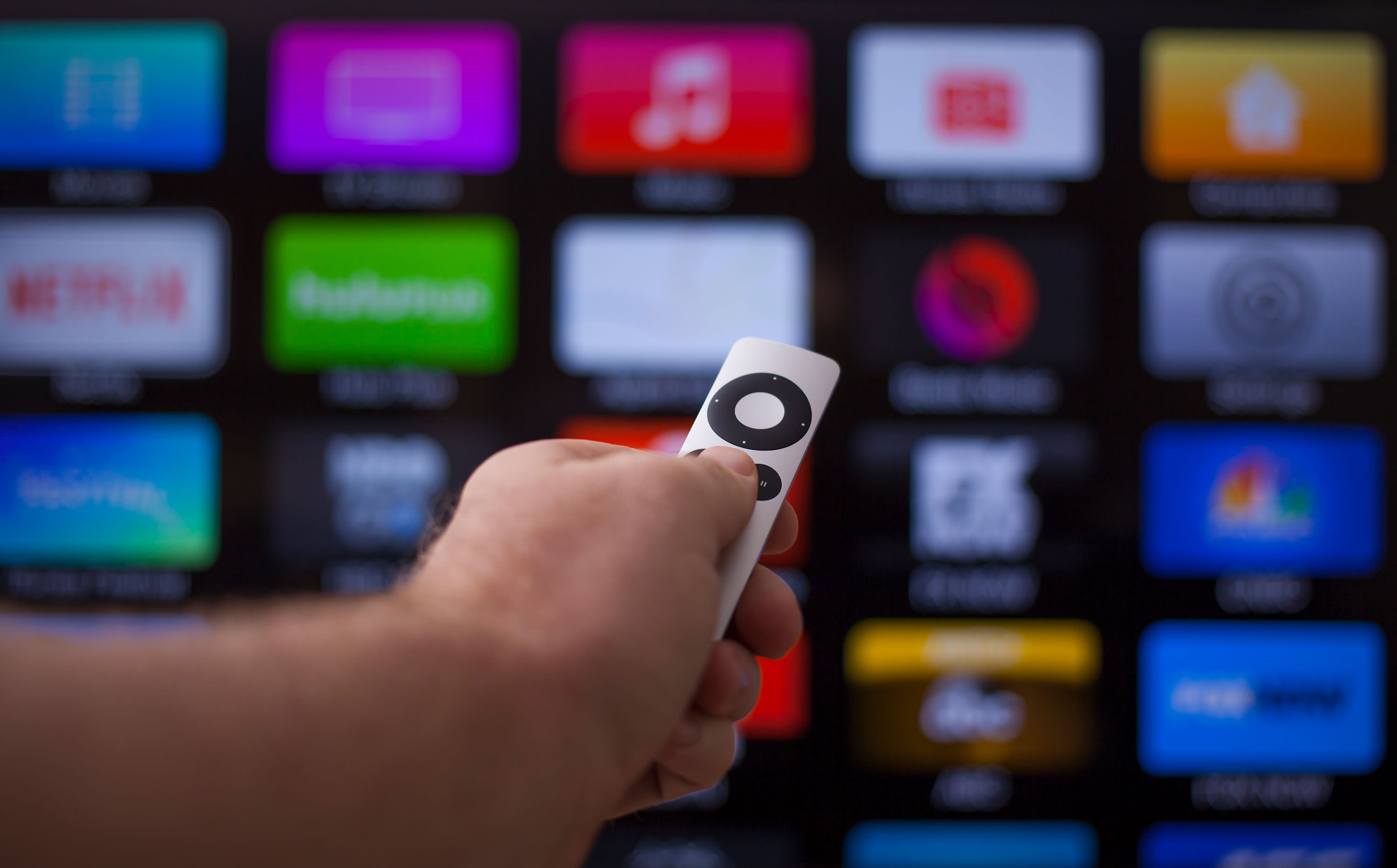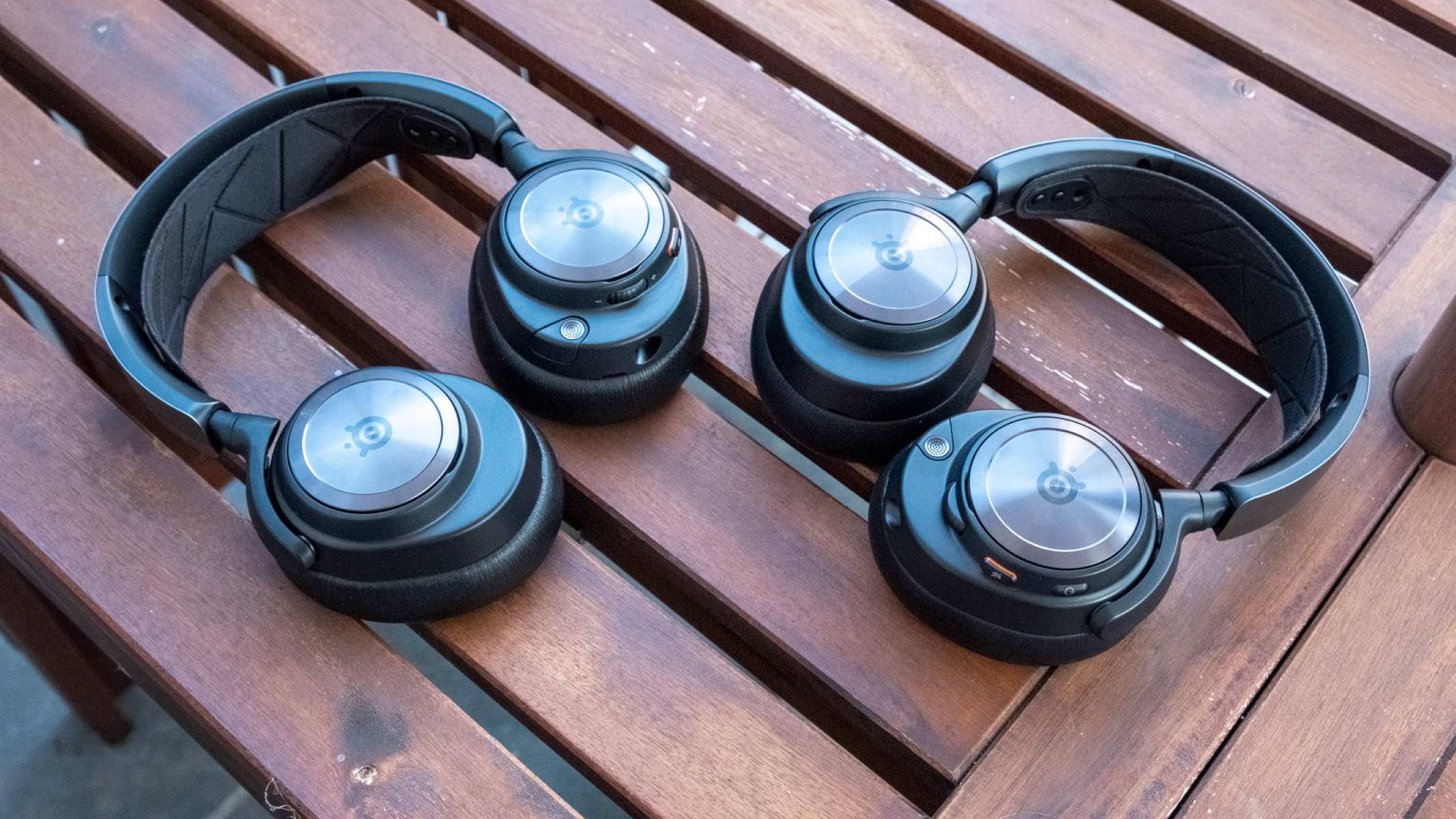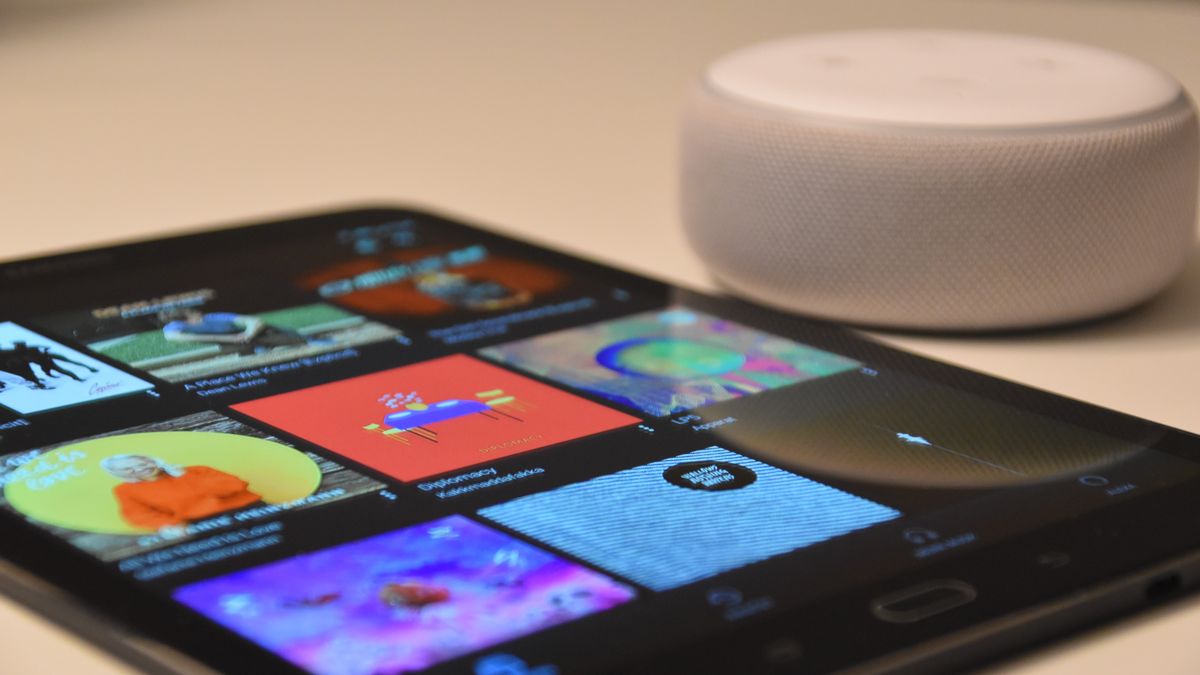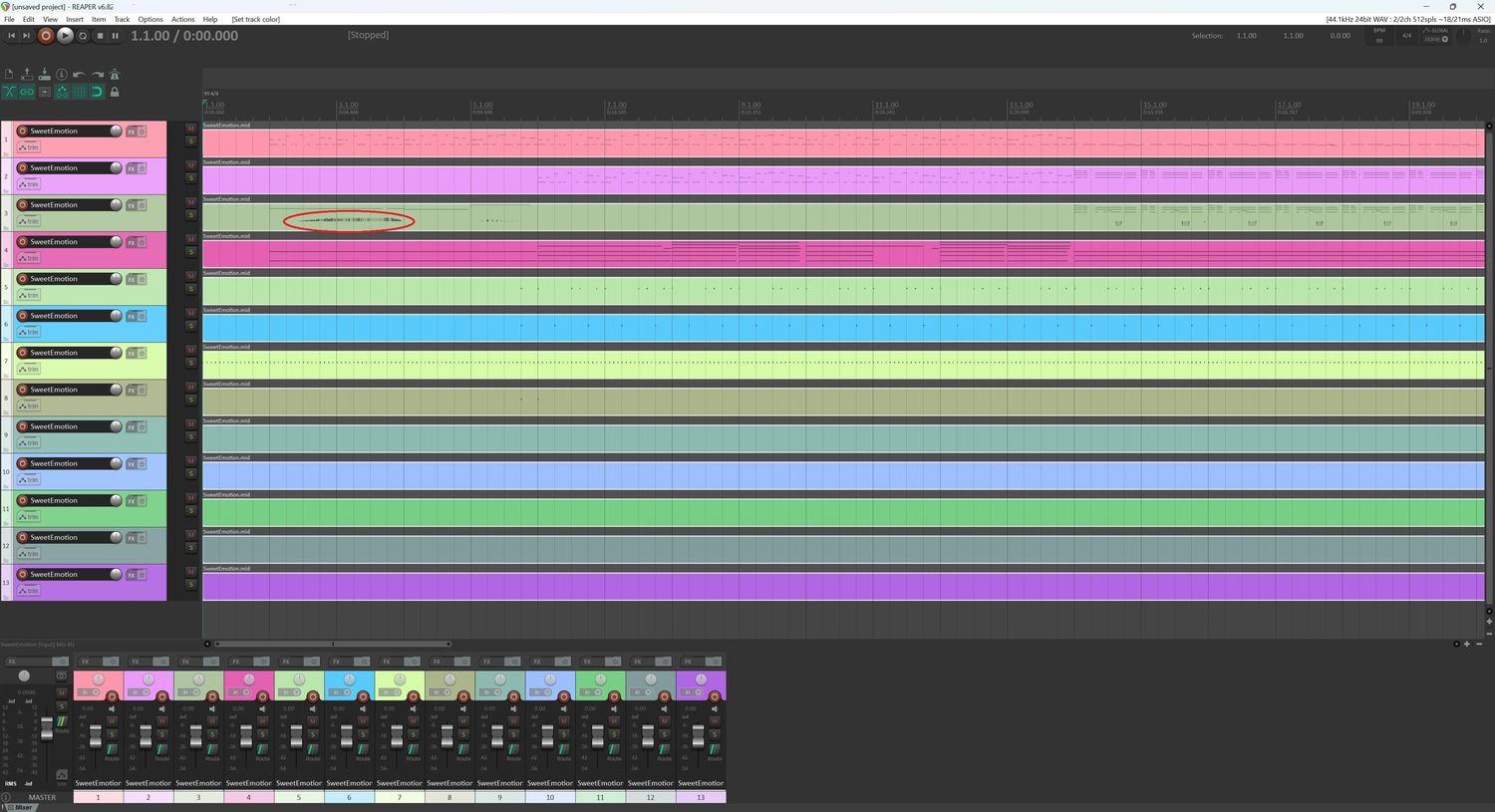Home>Devices & Equipment>Streaming>How To Only Play Music While Streaming


Streaming
How To Only Play Music While Streaming
Published: March 8, 2024
Learn how to exclusively play music during streaming sessions. Discover the best ways to keep the focus on your music while streaming online.
(Many of the links in this article redirect to a specific reviewed product. Your purchase of these products through affiliate links helps to generate commission for AudioLover.com, at no extra cost. Learn more)
Table of Contents
Introduction
Are you a streamer looking to add an extra layer of entertainment to your live broadcasts? Incorporating music into your streaming sessions can elevate the overall experience for both you and your audience. Whether you're a gamer, artist, or content creator, the right soundtrack can set the mood, create ambiance, and keep your viewers engaged. However, you might be wondering how to play music exclusively during your streams without infringing on copyright laws or facing potential content takedowns.
In this comprehensive guide, we'll delve into the step-by-step process of seamlessly integrating music into your live streams while adhering to copyright regulations. By following these instructions, you can curate a personalized playlist and synchronize it with your streaming platform, ensuring that your content remains compliant and enjoyable for your audience.
Let's embark on this journey to discover how you can enhance your streaming experience with the perfect musical backdrop. Whether you're aiming to create a relaxing atmosphere, pump up the energy, or simply add a touch of personality to your content, the following steps will empower you to achieve your streaming goals while immersing your viewers in an unforgettable auditory experience.
Step 1: Choose a Music Streaming Platform
Selecting the right music streaming platform is the foundational step in integrating music into your live streams. It's essential to choose a platform that aligns with your content, audience, and streaming setup. Here's a breakdown of the key considerations when choosing a music streaming platform:
-
Licensing and Copyright Compliance: Prioritize platforms that offer licensed music for streaming. Look for platforms that have agreements with record labels and artists to ensure that the music you play is legally cleared for use in your live streams. This helps you avoid potential copyright issues and ensures that your content remains protected.
-
Integration with Streaming Software: Consider platforms that seamlessly integrate with popular streaming software such as OBS Studio, Streamlabs OBS, or XSplit. This integration allows you to control the music playback directly from your streaming software, providing a smooth and efficient streaming experience.
-
Customization and Playlist Management: Opt for platforms that offer robust customization options and playlist management features. This enables you to curate personalized playlists tailored to your content and audience preferences. Look for platforms that allow you to create, edit, and organize playlists with ease, ensuring that you can effortlessly switch between different musical vibes during your streams.
-
Audience Interaction and Engagement: Some music streaming platforms offer interactive features that allow your audience to engage with the music playback. Look for platforms that enable song requests, voting on upcoming tracks, or other interactive elements that can enhance viewer participation and create a dynamic streaming environment.
-
Sound Quality and Catalog: Evaluate the sound quality and music catalog offered by the platform. Choose a platform that provides high-quality audio streaming and a diverse catalog of music across various genres. This ensures that you have access to a wide range of tracks to suit different moods and themes for your streams.
By carefully considering these factors, you can select a music streaming platform that seamlessly integrates with your live streaming setup and enhances the overall viewer experience. Once you've chosen the ideal platform, you can proceed to the next steps of creating playlists and adjusting streaming settings to bring your music-infused streams to life.
Step 2: Create a Playlist
Creating a captivating playlist is a pivotal aspect of infusing your live streams with the perfect musical accompaniment. A well-curated playlist sets the tone, evokes emotions, and keeps your audience engaged throughout your streaming sessions. Here's a detailed guide on how to craft a compelling playlist tailored to your content and audience preferences.
Understand Your Audience and Content
Before diving into playlist creation, take the time to understand your audience demographics and the nature of your content. Consider the age group, interests, and musical preferences of your viewers. Additionally, analyze the themes and mood of your streams. Whether you're streaming high-energy gaming sessions, artistic creations, or relaxing chats, aligning your playlist with the overall vibe of your content is crucial for a cohesive viewer experience.
Select Diverse Music Genres
Variety is key when assembling a playlist for your live streams. Incorporating a diverse range of music genres ensures that you cater to different tastes within your audience. From upbeat pop tracks to soothing lo-fi beats and epic orchestral compositions, diversifying your playlist allows you to adapt the musical atmosphere to different moments within your streams. This versatility keeps your content dynamic and engaging, appealing to a broader audience base.
Consider Copyright-Cleared Music
When selecting tracks for your playlist, prioritize music that is cleared for use in live streams. Many music streaming platforms offer a library of copyright-cleared tracks specifically designed for content creators. By leveraging these resources, you can confidently incorporate popular songs and emerging artists' music into your streams without worrying about copyright infringements. Additionally, some platforms provide tools to verify the copyright status of individual tracks, ensuring that your playlist remains compliant with legal regulations.
Organize and Update Your Playlist Regularly
Maintaining a well-organized playlist is essential for seamless music integration into your streams. Consider creating themed sections within your playlist to match different segments of your content. For example, you might have a section dedicated to background music for intros and outros, another for high-energy tracks during intense gameplay, and a calming selection for interactive audience segments. Regularly updating your playlist with fresh tracks and removing outdated ones keeps your content feeling current and prevents repetitive music fatigue among your viewers.
Collaborate with Your Audience
Engage your audience in the playlist curation process by seeking their input and song requests. Encouraging viewer participation not only fosters a sense of community but also allows you to tailor the musical experience to their preferences. Some music streaming platforms offer interactive features that enable viewers to suggest songs or vote on upcoming tracks, fostering a collaborative and interactive streaming environment.
By following these steps, you can craft a compelling playlist that enriches your live streams and captivates your audience, creating an immersive and memorable viewing experience. With a carefully curated playlist at your disposal, you're ready to elevate your streams with the power of music.
Step 3: Adjust Streaming Settings
After curating a captivating playlist, the next crucial step in seamlessly integrating music into your live streams is to adjust the streaming settings on your preferred platform. These settings allow you to control the audio output, manage volume levels, and synchronize the music playback with your live content. By fine-tuning these settings, you can ensure that the music enhances your streams without overpowering your voice or other audio elements. Let's delve into the essential aspects of adjusting streaming settings to optimize the music experience for your audience.
Audio Levels and Balancing
One of the primary considerations when adjusting streaming settings is to carefully balance the audio levels between your voice, in-game sound effects, and the music playback. Most streaming platforms and software offer audio mixing features that enable you to adjust the volume levels of individual audio sources. It's crucial to find the right balance to prevent the music from overshadowing your commentary or other audio elements within your streams. By fine-tuning the audio levels, you can create a harmonious blend of voice, game sound, and music, ensuring a pleasant and immersive auditory experience for your viewers.
Fade-In and Fade-Out Transitions
Incorporating smooth transitions between different audio sources is key to maintaining a seamless and professional streaming experience. Many streaming software applications provide options for implementing fade-in and fade-out effects for audio sources, including music. These transitions allow you to smoothly introduce and conclude music playback, preventing abrupt starts or stops that could disrupt the flow of your streams. By utilizing fade-in and fade-out transitions, you can seamlessly integrate music into your content, enhancing the overall production quality and viewer engagement.
Music Overlay and Visual Indicators
Some streaming platforms and software offer visual indicators or overlays to display the currently playing track or artist information on your stream's interface. These overlays provide a visually engaging way to showcase the music being played, allowing your audience to connect with the soundtrack and discover new favorite tracks. Additionally, visual indicators can serve as a subtle yet effective method to acknowledge the artists and songs featured in your streams, fostering a respectful and transparent approach to music integration.
Real-Time Monitoring and Testing
Before commencing your live streams, it's essential to conduct real-time monitoring and testing of the music playback alongside your voice and other audio elements. This practice allows you to ensure that the music levels are balanced, transitions are seamless, and the overall audio quality meets your standards. By actively monitoring the music output during test runs, you can identify and address any potential audio issues, guaranteeing a polished and professional streaming experience when you go live.
By meticulously adjusting the streaming settings to accommodate music playback, you can elevate the quality of your live streams and create an immersive audio environment that resonates with your audience. These settings empower you to seamlessly integrate music into your content, adding depth, emotion, and entertainment value to your streams. With the streaming settings optimized for music integration, you're poised to deliver captivating and memorable live experiences that leave a lasting impression on your viewers.
Step 4: Start Streaming with Music Only
Once you've meticulously curated your playlist and fine-tuned the streaming settings, you're ready to embark on the exhilarating journey of streaming with music as the primary audio backdrop. This step marks the culmination of your efforts in seamlessly integrating music into your live streams, creating an immersive and captivating audiovisual experience for your audience.
As you initiate the streaming process, it's essential to ensure that the music takes center stage while complementing the visual content of your stream. Whether you're engaging in gameplay, artistic creation, or interactive discussions, the music should enhance the overall ambiance and evoke emotions that resonate with your viewers.
To start streaming with music only, follow these key steps:
-
Initiate Music Playback: Open your chosen music streaming platform and select the playlist you've meticulously crafted for your live streams. Ensure that the playlist is queued and ready to play, setting the stage for a seamless transition into the music-infused streaming experience.
-
Verify Audio Levels: Before going live, conduct a final check of the audio levels to ensure that the music is balanced with any visual content or ambient sound effects. This step is crucial for maintaining a harmonious blend of audio elements and preventing any overpowering or distracting audio imbalances during the stream.
-
Engage Your Audience: As the music sets the tone for your stream, consider incorporating interactive elements that encourage audience engagement with the soundtrack. Whether it's through song requests, music-themed polls, or interactive discussions about the music playing, fostering audience participation adds a layer of communal enjoyment to the streaming experience.
-
Monitor Viewer Feedback: Throughout the stream, pay attention to viewer feedback regarding the music selection and its impact on the overall viewing experience. Observing audience reactions and preferences can provide valuable insights for refining future playlists and enhancing the musical atmosphere of your streams.
-
Adapt and Evolve: Embrace the dynamic nature of streaming with music by continuously adapting and evolving your playlist based on audience feedback and evolving content themes. By staying attuned to your audience's musical preferences and the changing dynamics of your streams, you can refine the music-only streaming experience to deliver maximum enjoyment and immersion.
By embarking on the journey of streaming with music as the primary audio component, you're poised to captivate your audience with a multi-sensory experience that transcends traditional live content. The seamless integration of music into your streams elevates the overall production quality, fosters emotional connections, and leaves a lasting impression on your viewers, ensuring that each stream becomes a memorable and immersive audiovisual adventure.
Conclusion
In conclusion, the integration of music into live streams presents a transformative opportunity for content creators to elevate the overall viewer experience. By following the comprehensive steps outlined in this guide, streamers can seamlessly infuse their content with captivating soundtracks while adhering to copyright regulations and maintaining a harmonious audiovisual balance.
The journey begins with the careful selection of a music streaming platform that aligns with the content, audience, and streaming setup. Prioritizing platforms with licensing agreements and seamless integration with streaming software sets the stage for a streamlined music integration process. Once the platform is in place, the creation of a compelling playlist becomes the focal point, emphasizing the importance of understanding the audience, diversifying music genres, and prioritizing copyright-cleared tracks. The collaborative aspect of playlist curation, involving audience input and engagement, adds a communal dimension to the streaming experience.
Adjusting streaming settings emerges as a pivotal step, enabling streamers to fine-tune audio levels, implement smooth transitions, and incorporate visual indicators for a cohesive and professional music integration. This meticulous adjustment ensures that the music enhances the streams without overshadowing other audio elements, fostering a balanced and immersive auditory environment.
As streamers embark on the exhilarating journey of streaming with music as the primary audio backdrop, the seamless initiation of music playback, verification of audio levels, and active engagement with the audience become essential components. The dynamic nature of streaming with music encourages continuous adaptation and evolution, allowing streamers to refine the music-only streaming experience based on audience feedback and evolving content themes.
In essence, the integration of music into live streams transcends traditional content boundaries, creating multi-sensory experiences that resonate with viewers on an emotional level. The careful curation of playlists, the harmonious blending of audio elements, and the interactive engagement with the audience collectively contribute to an immersive and memorable streaming experience.
By embracing the power of music, streamers can forge deeper connections with their audience, evoke emotions, and create a distinct identity for their content. As the streaming landscape continues to evolve, the seamless integration of music into live streams stands as a testament to the innovative and captivating possibilities that await content creators and viewers alike.











